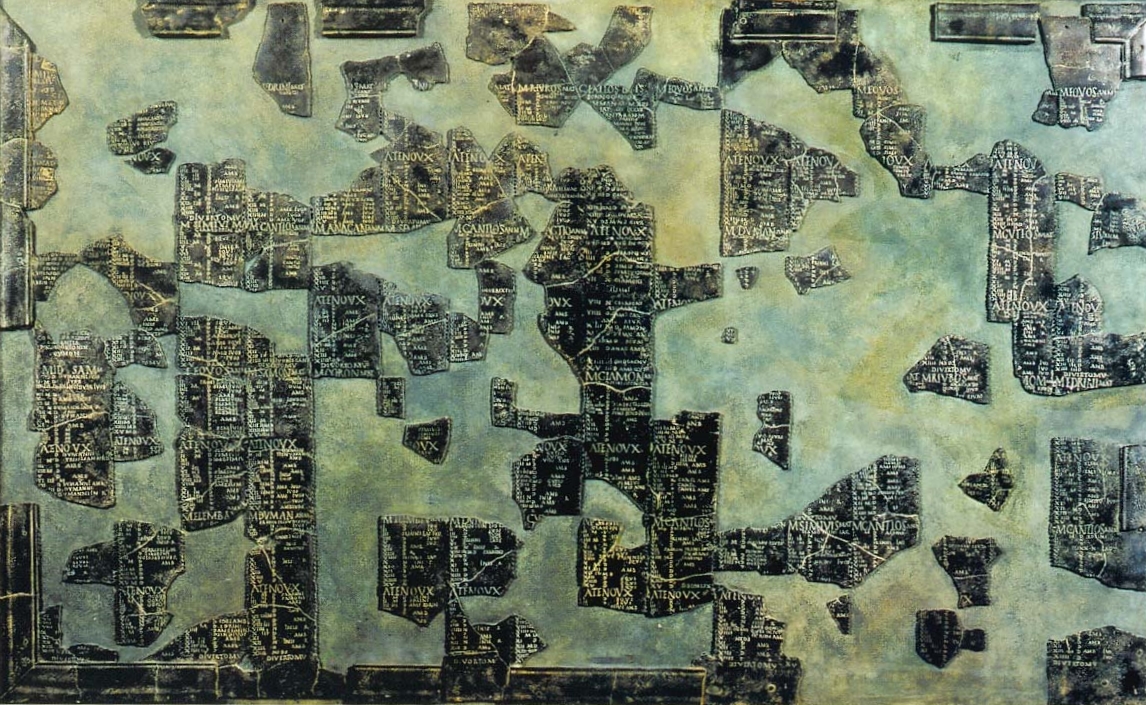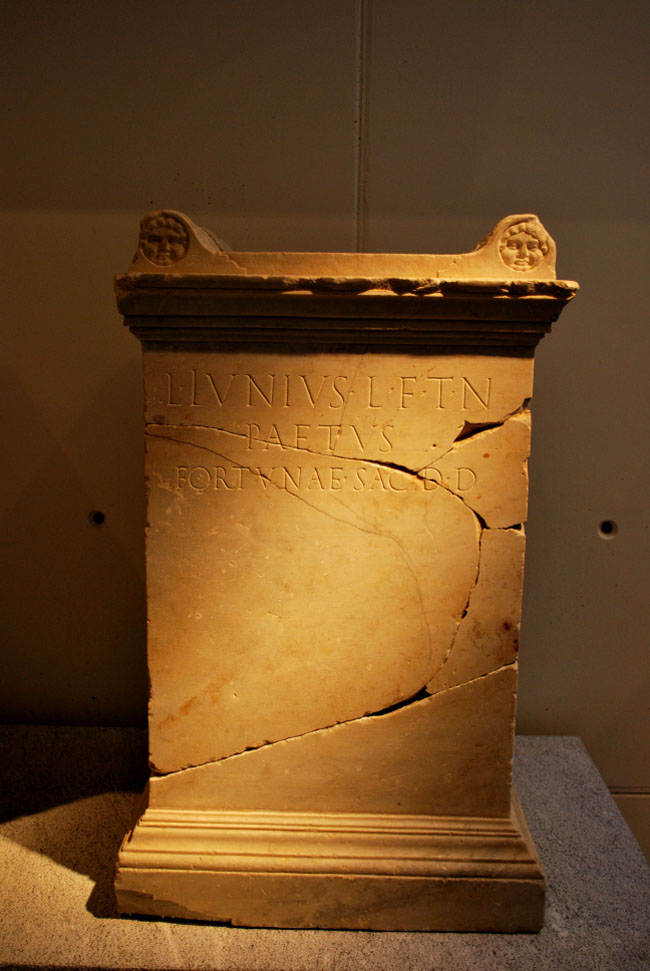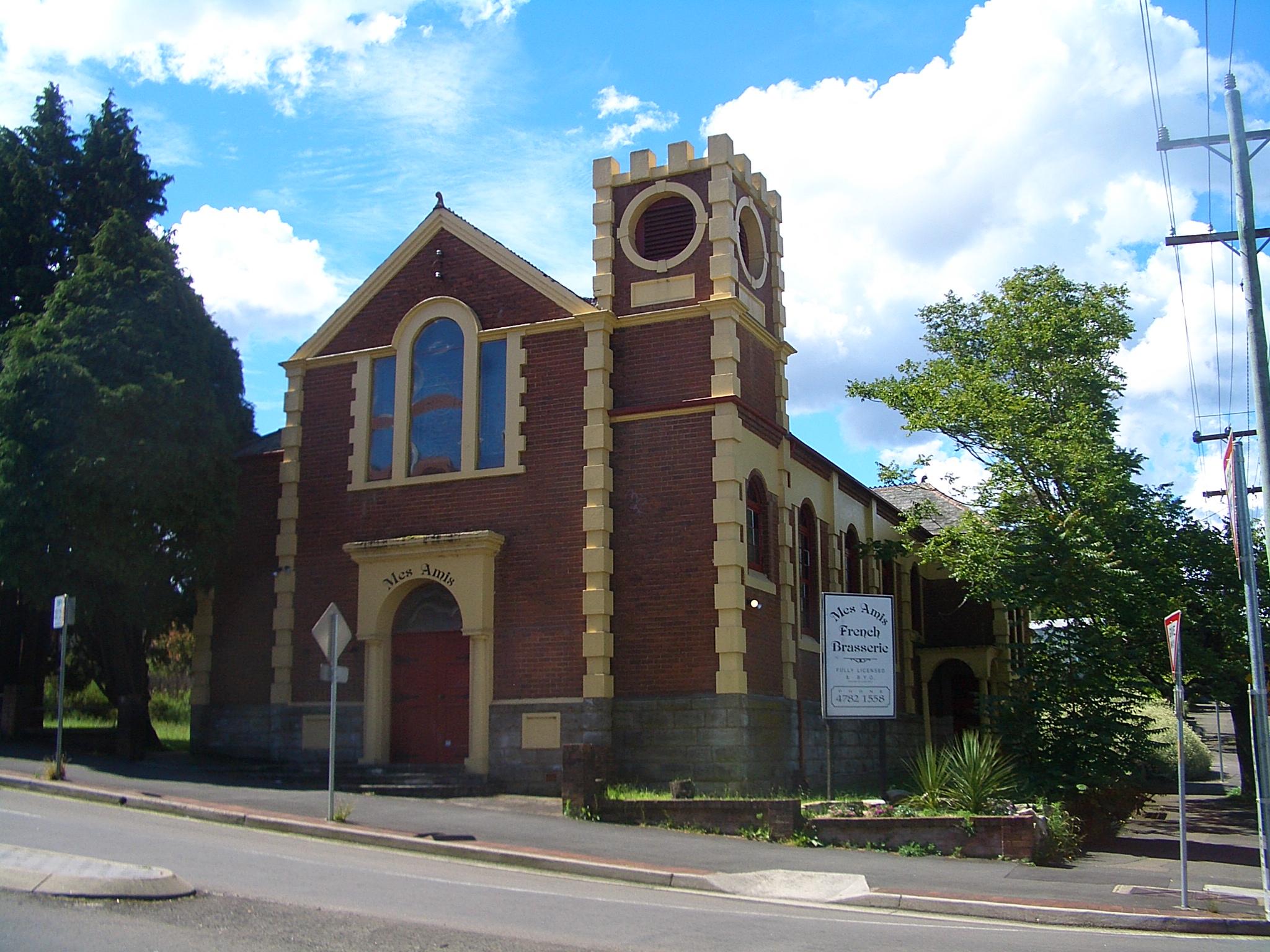|
Catuslugi
The Catuslugi (Gaulish: *''Catuslōgoi'', 'troops of combat'; also Catuslougi, Catoslugi) were a small Belgic coastal tribe dwelling around modern-day Incheville (Normandy) during the Roman period. Name Attestations The Catuslugi are not mentioned by Caesar; the ancient name ''Catuslougi'' is rendered from an allusion of the 1st-century AD writer Pliny (''Catoslugi'', var. ''catu''-, ''castologi''), complemented by two Gallo-Roman inscriptions referring to the region ''as pago Catuslou(go)'' and ''pago Catus(lougo)'' (early-3rd c. AD). Etymology The ethnonym ''Catuslōgi'' (or ''Catuslougi'') is a latinized form of Gaulish ''*Catuslōgoi'' (sing. ''Catuslōgos''), meaning 'troops of combat'. It derives from the stem ''catu-'' ('combat'; cf. OIr. ''cath'' 'battle, troop', OW. ''cad'' 'battle') attached to ''slougo-'' ('troop, army, group'; cf. OIr. '' slúag'' 'troop, army, crowd, assembly', MW. ''llu'' 'troop', Old Bret. -''lu'' 'army'). The original meaning of *''slou ... [...More Info...] [...Related Items...] OR: [Wikipedia] [Google] [Baidu] |
Sluagh
The Sluagh (, ; sga, slúag; English: 'host, army, crowd'), or Sluagh na marbh ('host of the dead'), were the hosts of the unforgiven dead in Irish and Scottish folklore., s.v. ''Sluagh''. In the words of British folklorist Lewis Spence, "In the Western Isles of Scotland the Sluagh, or fairy host, was regarded as composed of the souls of the dead flying through the air, and the feast of the dead at Hallowe'en was likewise the festival of the fairies." Usually taking a crescent form, similar to a flight of grey birds, they were said to be able to approach and pick up a person from any direction and then transport them far away through the air, from one island to another. Although they would sometimes rescue humans from dangerous rock clefts, they were generally portrayed as dangerous to mortals. Etymology The Scottish Gaelic name stems from the Old Irish (≈ ), meaning 'host, army; crowd, assembly'. Variant forms include and . It derives from the Proto-Celtic root * (cf. Gaul ... [...More Info...] [...Related Items...] OR: [Wikipedia] [Google] [Baidu] |
Ambiani
The Ambiani (Gaulish: ''Ambiāni'', 'those around') were a Belgic coastal tribe dwelling in the modern Picardy region during the Iron Age and Roman periods. They settled in the region between the 4th century and the second part of the 2nd century BC. In 113–101 BC, they took part in the fights against the Cimbri and Teutoni invaders during the Cimbrian War. In 57 and 52 BC, they participated in Gallic coalitions against Caesar, before their eventual subjugation by Rome in 51 BC. The Ambiani are known for their gold coinage, found in both northern France and Britain, which attest of extensive trading relations across the Channel. Name They are mentioned as ''Ambianos'' and ''Ambianis'' by Caesar (mid-1st c. BC), ''Ambianos'' in the summary of Livy's ''Ab Urbe Condita Libri'' (late 1st c. BC), ''Ambianoì'' (Ἀμβιανοὶ) and ''Ambianoĩs'' (Ἀμβιανοῖς) by Strabo (early 1st c. AD), ''Ambiani'' by Pliny (1st c. AD), ''Ambianoí'' (Ἀμβιανοί) by Ptolem ... [...More Info...] [...Related Items...] OR: [Wikipedia] [Google] [Baidu] |
Gaulish Language
Gaulish was an ancient Celtic language spoken in parts of Continental Europe before and during the period of the Roman Empire. In the narrow sense, Gaulish was the language of the Celts of Gaul (now France, Luxembourg, Belgium, most of Switzerland, Northern Italy, as well as the parts of the Netherlands and Germany on the west bank of the Rhine). In a wider sense, it also comprises varieties of Celtic that were spoken across much of central Europe ("Noric"), parts of the Balkans, and Anatolia (" Galatian"), which are thought to have been closely related. The more divergent Lepontic of Northern Italy has also sometimes been subsumed under Gaulish. Together with Lepontic and the Celtiberian spoken in the Iberian Peninsula, Gaulish helps form the geographic group of Continental Celtic languages. The precise linguistic relationships among them, as well as between them and the modern Insular Celtic languages, are uncertain and a matter of ongoing debate because of their sparse at ... [...More Info...] [...Related Items...] OR: [Wikipedia] [Google] [Baidu] |
Pagus
In ancient Rome, the Latin word (plural ) was an administrative term designating a rural subdivision of a tribal territory, which included individual farms, villages (), and strongholds () serving as refuges, as well as an early medieval geographical term. From the reign of Diocletian (284–305 AD) onwards, the referred to the smallest administrative unit of a province. These geographical units were used to describe territories in the Merovingian and Carolingian periods, without any political or administrative meaning. Etymology is a native Latin word from a root , a lengthened grade of Indo-European , a verbal root, "fasten" ('' pango''); it may be translated in the word as "boundary staked out on the ground". In semantics, used in is a stative verb with an unmarked lexical aspect of state resulting from completed action: "it is having been staked out", converted into a noun by , a type recognizable in English adjectives such as surveyed, defined, noted, etc. English d ... [...More Info...] [...Related Items...] OR: [Wikipedia] [Google] [Baidu] |
Imperial Cult Of Ancient Rome
The Roman imperial cult identified emperors and some members of their families with the divinely sanctioned authority (''auctoritas'') of the Roman State. Its framework was based on Roman and Greek precedents, and was formulated during the early Principate of Augustus. It was rapidly established throughout the Empire and its provinces, with marked local variations in its reception and expression. Augustus's reforms transformed Rome's Republican system of government to a ''de facto'' monarchy, couched in traditional Roman practices and Republican values. The '' princeps'' (emperor) was expected to balance the interests of the Roman military, Senate and people, and to maintain peace, security and prosperity throughout an ethnically diverse empire. The official offer of ''cultus'' to a living emperor acknowledged his office and rule as divinely approved and constitutional: his Principate should therefore demonstrate pious respect for traditional Republican deities and mores. ... [...More Info...] [...Related Items...] OR: [Wikipedia] [Google] [Baidu] |
Gauls
The Gauls ( la, Galli; grc, Γαλάται, ''Galátai'') were a group of Celtic peoples of mainland Europe in the Iron Age and the Roman period (roughly 5th century BC to 5th century AD). Their homeland was known as Gaul (''Gallia''). They spoke Gaulish, a continental Celtic language. The Gauls emerged around the 5th century BC as bearers of La Tène culture north and west of the Alps. By the 4th century BC, they were spread over much of what is now France, Belgium, Switzerland, Southern Germany, Austria, and the Czech Republic, by virtue of controlling the trade routes along the river systems of the Rhône, Seine, Rhine, and Danube. They reached the peak of their power in the 3rd century BC. During the 4th and 3rd centuries BC, the Gauls expanded into Northern Italy ( Cisalpine Gaul), leading to the Roman–Gallic wars, and into the Balkans, leading to war with the Greeks. These latter Gauls eventually settled in Anatolia, becoming known as Galatians. After the en ... [...More Info...] [...Related Items...] OR: [Wikipedia] [Google] [Baidu] |
Glossary Of Ancient Roman Religion
The vocabulary of ancient Roman religion was highly specialized. Its study affords important information about the religion, traditions and beliefs of the ancient Romans. This legacy is conspicuous in European cultural history in its influence on later juridical and religious vocabulary in Europe, particularly of the Western Church. This glossary provides explanations of concepts as they were expressed in Latin pertaining to religious practices and beliefs, with links to articles on major topics such as priesthoods, forms of divination, and rituals. For theonyms, or the names and epithets of gods, see List of Roman deities. For public religious holidays, see Roman festivals. For temples see the List of Ancient Roman temples. Individual landmarks of religious topography in ancient Rome are not included in this list; see Roman temple. __NOTOC__ Glossary A abominari The verb ''abominari'' ("to avert an omen", from ''ab-'', "away, off," and ''ominari'', "to pronounce on ... [...More Info...] [...Related Items...] OR: [Wikipedia] [Google] [Baidu] |
Julio-Claudian Dynasty
, native_name_lang= Latin, coat of arms=Great_Cameo_of_France-removebg.png, image_size=260px, caption= The Great Cameo of France depicting emperors Augustus, Tiberius, Claudius and Nero, type=Ancient Roman dynasty, country= Roman Empire, estates=* Imperial Palaces of the Palatine Hill * House of Augustus * Villa of Livia * Gardens of Maecenas * '' Domus Aurea'' * '' Domus Transitoria'' * Villa of Nero * '' Villa Jovis'', parent house=, titles= Roman emperor Pharaoh of Egypt Prince of the Senate Greatest Priest of Rome Father of the Country , styles="Imperator""Caesar"" Augustus", founded=, founder= Augustus, final ruler= Nero, other_families=, deposition= (deposed by Galba), ethnicity=Ancient Roman, religion= Roman Religion Imperial cult The Julio-Claudian dynasty comprised the first five Roman emperors: Augustus, Tiberius, Caligula, Claudius, and Nero. This line of emperors ruled the Roman Empire, from its formation (under Augustus, in 27 BC) until the last of ... [...More Info...] [...Related Items...] OR: [Wikipedia] [Google] [Baidu] |
Oppidum
An ''oppidum'' (plural ''oppida'') is a large fortified Iron Age settlement or town. ''Oppida'' are primarily associated with the Celtic late La Tène culture, emerging during the 2nd and 1st centuries BC, spread across Europe, stretching from Britain and Iberia in the west to the edge of the Hungarian plain in the east. These settlements continued to be used until the Romans conquered Southern and Western Europe. Many subsequently became Roman-era towns and cities, whilst others were abandoned. In regions north of the rivers Danube and Rhine, such as most of Germania, where the populations remained independent from Rome, ''oppida'' continued to be used into the 1st century AD. Definition is a Latin word meaning 'defended (fortified) administrative centre or town', originally used in reference to non-Roman towns as well as provincial towns under Roman control. The word is derived from the earlier Latin , 'enclosed space', possibly from the Proto-Indo-European , 'occu ... [...More Info...] [...Related Items...] OR: [Wikipedia] [Google] [Baidu] |
Deconsecration
Deconsecration, also called secularization, is the act of removing a religious blessing from something that had been previously consecrated by a minister or priest of that religion. The practice is usually performed on churches or synagogues to be rendered to non-religious ( secular) use or demolished. See also * Consecration * Desacralization of knowledge * Desecration * Secularization (church property) Secularization is the confiscation of church property by a government, such as in the suppression of monasteries. The term is often used to specifically refer to such confiscations during the French Revolution and the First French Empire in the ..., the confiscation of church property by a government References {{religion-stub Christian worship and liturgy ... [...More Info...] [...Related Items...] OR: [Wikipedia] [Google] [Baidu] |
Saint-Pierre-en-Val
Saint-Pierre-en-Val () is a commune in the Seine-Maritime department in the Normandy region in northern France. Geography A forestry and farming village situated in the valley of the river Bresle in the Pays de Bray, some northeast of Dieppe, at the junction of the D120 and the D1314 roads. Heraldry Population Places of interest * The church of St. Pierre, dating from the thirteenth century. See also *Communes of the Seine-Maritime department The following is a list of the 708 communes of the French department of Seine-Maritime. The communes cooperate in the following intercommunalities (as of 2020):Communes of Seine-Maritime {{Dieppe-geo-stub ... [...More Info...] [...Related Items...] OR: [Wikipedia] [Google] [Baidu] |
Bresle (river)
The Bresle (; ) is a river in the northwest of France that flows into the English Channel at Le Tréport. It crosses the departements of Oise, Somme and Seine-Maritime. It is long. Introduction For a long time, the course of the Bresle (especially the lower part) has had the role of a natural national frontier, serving as the boundary between powerful and often antagonistic political entities. It separated the Roman provinces of Belgian Gaul from Lyonnais Gaul, the Talou county (Dieppe) and the Vimeu during the Merovingian period, the county of Ponthieu, France and the Duchy of Normandy from the 10th century and also the taxation areas of Rouen and Amiens under the Ancien Régime. Today, the half- Norman, half-Picardy verdant, lake-filled valley carries on its traditional quality glass industry that started in the Middle Ages. The presence of numerous small enterprises dotted around the small towns and villages along its banks hasn't compromised the rich environment, which h ... [...More Info...] [...Related Items...] OR: [Wikipedia] [Google] [Baidu] |






